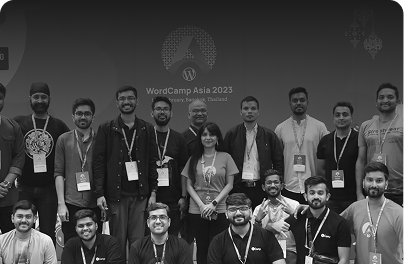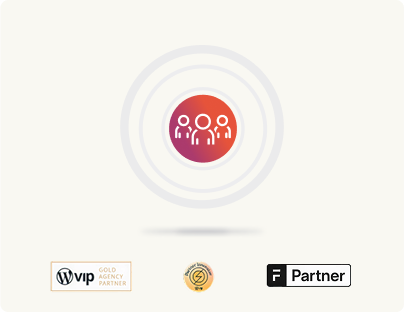Strapi vs headless WordPress: End-user experience
To be successful, a CMS needs to strike a balance between the expectations of three critical groups: content and marketing teams, development teams, and IT teams. Each of these stakeholders brings unique priorities to the table, and their experience with the platform ultimately shapes its overall success and the ROI it delivers. That’s why when evaluating Strapi vs WordPress as a CMS, it’s crucial to assess what each platform offers to address the needs of all key stakeholders. So let’s now dive into how Strapi and WordPress compare for these key CMS stakeholders.
Content and marketing teams: Ease of use
Content and marketing teams need a CMS that’s intuitive, efficient, and equipped with features to streamline their workflows. From creating and scheduling content to managing approval workflows and optimizing for SEO, these teams expect tools that just work—without requiring technical intervention.
WordPress: The undisputed winner
WordPress has a significant advantage—it’s ubiquitous.
Its interface is so well-known and user-friendly that many team members likely already have prior experience with it.
For content creation, even in its headless or hybrid mode, WordPress brings its rich Gutenberg editor that combines block-based modular content creation with ease of use. Unlike most headless platforms that feel skeletal when dealing with modular content, WordPress provides a rich set of built-in features that empower creators to produce engaging content without feeling constrained. With WordPress, even in a headless/hybrid setup, you get:
- Visual content creation:
The Gutenberg editor, even in a headless setup, retains its block-based, visual content creation interface. Content creators can use Gutenberg to create, format, and structure modular content visually within the WordPress backend. This experience is independent of the frontend framework consuming the content. - Inline editing:
While inline editing (editing content directly on the live site) isn’t natively supported in a headless WordPress setup out of the box, plugins or custom integrations can enable it. Hybrid WordPress setups (mixing headless APIs with traditional themes) often retain this capability seamlessly. - Drag-and-drop interfaces:
The Gutenberg editor itself provides drag-and-drop functionality for managing content blocks, giving non-technical users a highly intuitive way to build pages. This capability is fully accessible in the WordPress backend, even when the content is served to a decoupled frontend.
It must be noted that extending WordPress’s traditional capabilities to headless or hybrid setups requires thoughtful planning, particularly when defining how content is structured and delivered via APIs. However, once implemented, WordPress’s rich ecosystem of plugins, integrations, and tools ensures that content teams retain the intuitive workflows they’re accustomed to, while developers and IT teams gain the flexibility of a modern headless architecture. And while headless implementations can limit certain features (like live previews or inline editing) without additional configurations, WordPress’s ecosystem and plugins can bridge these gaps, making it far more user-friendly for non-technical teams compared to Strapi’s current state.
This seamless blend of usability and extensibility makes WordPress an attractive choice for projects aiming to balance cutting-edge delivery methods with a familiar, efficient content creation experience.
When it comes to Strapi, the user experience for content and marketing teams can be underwhelming. Features that cater to non-technical users are minimal or still evolving.
Development teams: Flexibility and feature sets
Developers want a CMS that provides flexibility, scalability, and powerful APIs for integrating with custom frontends or other applications. They also value a strong ecosystem of tools and resources to accelerate their work.
Strapi: The API powerhouse
When it comes to API delivery, Strapi is unmatched. Its headless-only approach ensures that developers have full control over how content is delivered and consumed. For teams focused solely on API-driven workflows, Strapi offers unparalleled flexibility, allowing developers to design custom frontends or integrate with multiple platforms with ease.
However, development is more than just APIs. This is where WordPress shines as a hybrid headless solution. In addition to robust REST and GraphQL APIs, WordPress provides a huge library of plugins, native integrations, and developer resources. Its massive community means developers can find solutions to almost any challenge, often without starting from scratch.
As far as frontend capabilities are concerned, both platforms perform well. However, WordPress’s hybrid approach allows developers to choose between traditional frontend rendering, headless delivery, or a mix of both. This flexibility can significantly simplify projects that require a balance of modern development practices and traditional workflows. This hybrid model is particularly advantageous for organizations managing diverse digital experiences, as it allows them to leverage the traditional WordPress ecosystem while adopting headless architecture where it matters most—for example, in delivering dynamic content to mobile apps, single-page applications (SPAs), or Internet of Things (IoT) devices. Because Strapi, on the other hand, being a headless-only solution lacks this flexibility.
IT teams: Security, reliability, and maintainability
IT teams prioritize a CMS that is secure, reliable, and easy to maintain. They also value platforms that integrate well with existing infrastructure and require minimal intervention to keep running smoothly.
WordPress: The mature ecosystem
WordPress has been around for decades, and its mature backend reflects that experience. It offers robust tools for managing user roles and permissions, scheduling updates, and handling backups. Its extensive ecosystem means IT teams can leverage managed hosting platforms to offload routine maintenance tasks, making WordPress a dependable choice for enterprise-scale applications.
WordPress is also secure. With thousands of developers globally monitoring its codebase, vulnerabilities are identified and patched promptly, often outpacing the response times of closed-source platforms. Regular updates and a predictable release schedule ensure enterprises can maintain a secure and reliable digital presence, making WordPress a strong contender for organizations seeking both scalability and security.
Further, with organizations partnering with managed hosting solutions like WordPress VIP, it’s like having an additional security team on hand. These services offer enterprise-grade features such as real-time threat monitoring, proactive vulnerability patching, DDoS protection, and automated backups, creating a robust security framework tailored for large-scale operations.
Strapi, being newer and headless-only, is inherently secure in the sense that it has fewer attack surfaces (since it doesn’t handle frontend rendering). However, it lacks the mature tooling and ecosystem WordPress provides. Tasks like setting up backups, managing updates, or integrating advanced security features often require custom solutions, which can increase the burden on IT teams. That said, if you go with Strapi’s hosting, some of these are handled for you. But again, if you’re looking at Strapi’s enterprise edition, it’s self-hosted. You can contact their team to explore additional options.When weighing Strapi vs WordPress as a CMS, factoring in the user experience for all key stakeholders is essential. Strapi is clearly developer-centric, and this is evident in the many ways its other users experience the platform.







